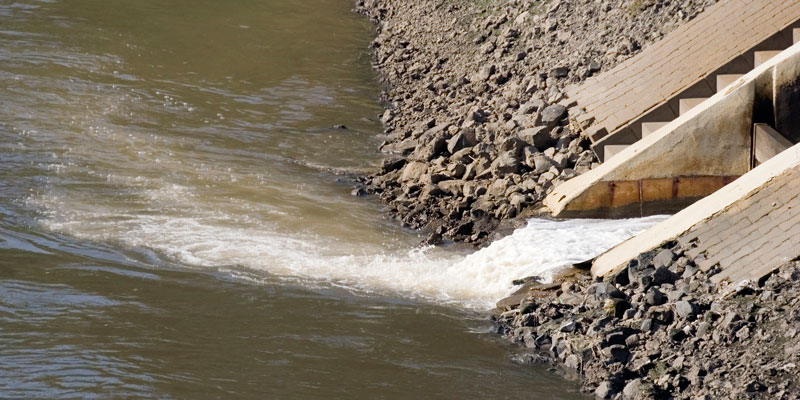Spatial and Temporal Monitoring of Bacterial Loading to the Abbotsford-Sumas Aquifer from Agricultural Manure Application
Principal Investigator - Edwin Cey, Associate Professor, University of Calgary (2007-2010)

Challenge
The movement of harmful bacteria through soil to groundwater has the potential to adversely impact water quality and human health. Where shallow groundwater is used for drinking, it is important to evaluate the vulnerability of pathogen (bacteria and viruses) contamination in the water supply, due to their acute toxicity. Land use practices, such as the application of manure on agricultural lands, can lead to contamination of groundwater.
Groundwater vulnerability to pathogens is difficult to evaluate because pathogens are not transported in the same way as soluble contaminants, such as nitrates and pesticides. There is increasing evidence from water well surveys that traditionally vulnerable geologic settings, such as unconfined sand and gravel, may in fact have a lower risk to pathogen contamination, but this needs to be studied further. Complications arise because detections of pathogens in groundwater tend to occur infrequently in time and have been linked to heavy rainfall events. Therefore, both space and time need to be considered when evaluating the risk of pathogens in groundwater.
The project team, led by Dr. Edwin Cey, focused on understanding the transport of pathogens in the Abbotsford-Sumas aquifer, which is a large shallow groundwater resource that serves as the water supply for more than 100,000 people in Canada and the United States, and has a history of nitrate contamination related to intensive agricultural land use.
Project
The purpose of this study was to examine whether the Abbotsford-Sumas aquifer is prone to bacterial contamination from agricultural sources. Groundwater samples were collected from more than 35 monitoring wells across the region. All samples were analyzed to measure the concentration of E. coli (E. coli is an indicator bacteria of fecal contamination) and other major chemical compounds. Special soil plots were also used to apply known quantities of manure and synthetic tracers designed to mimic the movement of various contaminants. Shallow soil monitoring devices were installed beneath the plots to collect water samples and monitor water flow through the soil. Soil samples were collected from the plots at the end of the testing to evaluate the depth of transport for bacteria and the synthetic tracers.
The results from 385 groundwater samples collected over an eleven month period showed that only four samples (from three different locations) had detectable levels of E. coli bacteria. E. coli detections were linked spatially to surface water sources, highlighting that groundwater under the influence of surface water can be at risk of microbial contamination. Nitrate, a dissolved chemical associated with agricultural manure and fertilizer usage, was present in all groundwater wells with concentrations often above drinking water guidelines. The results strongly suggested that nitrate and bacteria moved differently through the soil, with bacteria likely to be preferentially removed before infiltrating water reaches groundwater.
Based on these findings, it was concluded that shallow groundwater at the Abbotsford site was not highly susceptible to bacterial contamination despite the presence of widespread agricultural impacts. It appears that the coarse-grained soils of the region, which make groundwater prone to contamination from dissolved chemicals such as nitrate, are effective at restricting bacteria movement and will actually reduce the risk of bacteria reaching groundwater.
Outputs
- This project developed a novel way of installing water monitoring devices, without disturbance to the plants at ground surface. This has advantages when conducting collaborative research at agricultural producer sites.
- This project has resulted in several meetings and participation in conferences. These include:
- The Abbotsford Aquifer Scientific Planning Meeting, where future research on agriculture groundwater issues took place;
- Abbotsford Groundwater Forum, where public stakeholder met to discuss local groundwater quality and land management issues related to the Abbotsford-Sumas aquifer;
- The Microbial Transport and Survival in Porous Media Conference – Niagara-on-the-Lake, ON, a conference which provided a valuable international forum to discuss bacterial transport issues with scientists from around the world;
- Several meetings with Agriculture and Agri-Food Canada to discuss project results and plan future collaborations; and
- The Abbotsford Aquifer Working Group, a meeting to facilitate discussions on current and future research
- Additionally this project has resulted in a various publications and reports. These include:
- An MSc thesis which will also be published in a peer reviewed journal; a conference paper on Colloid transport behaviour in agricultural soils; a conference talk on field investigation of potential E. coli contamination of a shallow vulnerable aquifer; a meeting report on spatial and temporal monitoring of E. coli in shallow groundwater and soil zone; and a workshop report on monitoring of bacterial loading to the Abbotsford-Sumas aquifer.
Outcomes
- Potential changes in practice – Federal, provincial and municipal government officials can use the information in this project to support the ongoing adoption of guidelines for groundwater management. This research provides new insight into water management; specifically there is a need to recognize the differences in transport behaviour between dissolved chemicals and microbial organisms.
- Changes in practice as the results have implications for agricultural practices, such as applications of manure should be avoided by farm operators during the fall to minimize potential flushing through the soil zone.




